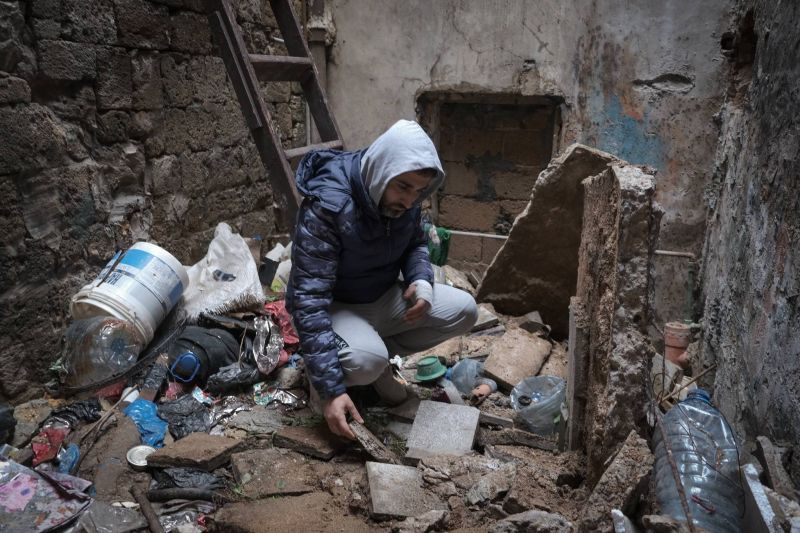
Mina resident Omar Barakat sifts through debris beneath where his balcony collapsed Wednesday, fracturing his wrist. Feb. 9, 2023. (Credit: João Sousa/L'Orient Today)
TRIPOLI — Near the coastline in Tripoli’s Mina district sits Khan al-Tamathili, an Ottoman-era courtyard building of stone arches and crumbling balconies that, long ago, hosted visitors to the former maritime trade hub.
Named for the statue that once stood in the courtyard — said to have been stolen decades ago, during the war — the khan now houses dozens of informal residents in makeshift apartments. There, women prepare vegetables on a huge shared terrace and kids weave a football between mounds of garbage.
Residents here, as well as in other parts of Tripoli, say they slept outside despite the cold after Monday’s massive 7.8-magnitude earthquake in southern Turkey that killed more than 21,000 people across both Turkey and Syria, according to the latest count.
The quake and subsequent aftershocks shook Lebanon but caused no deaths. Residents of Mina’s aging khan were left fearing the dilapidated structure might fall on top of them.
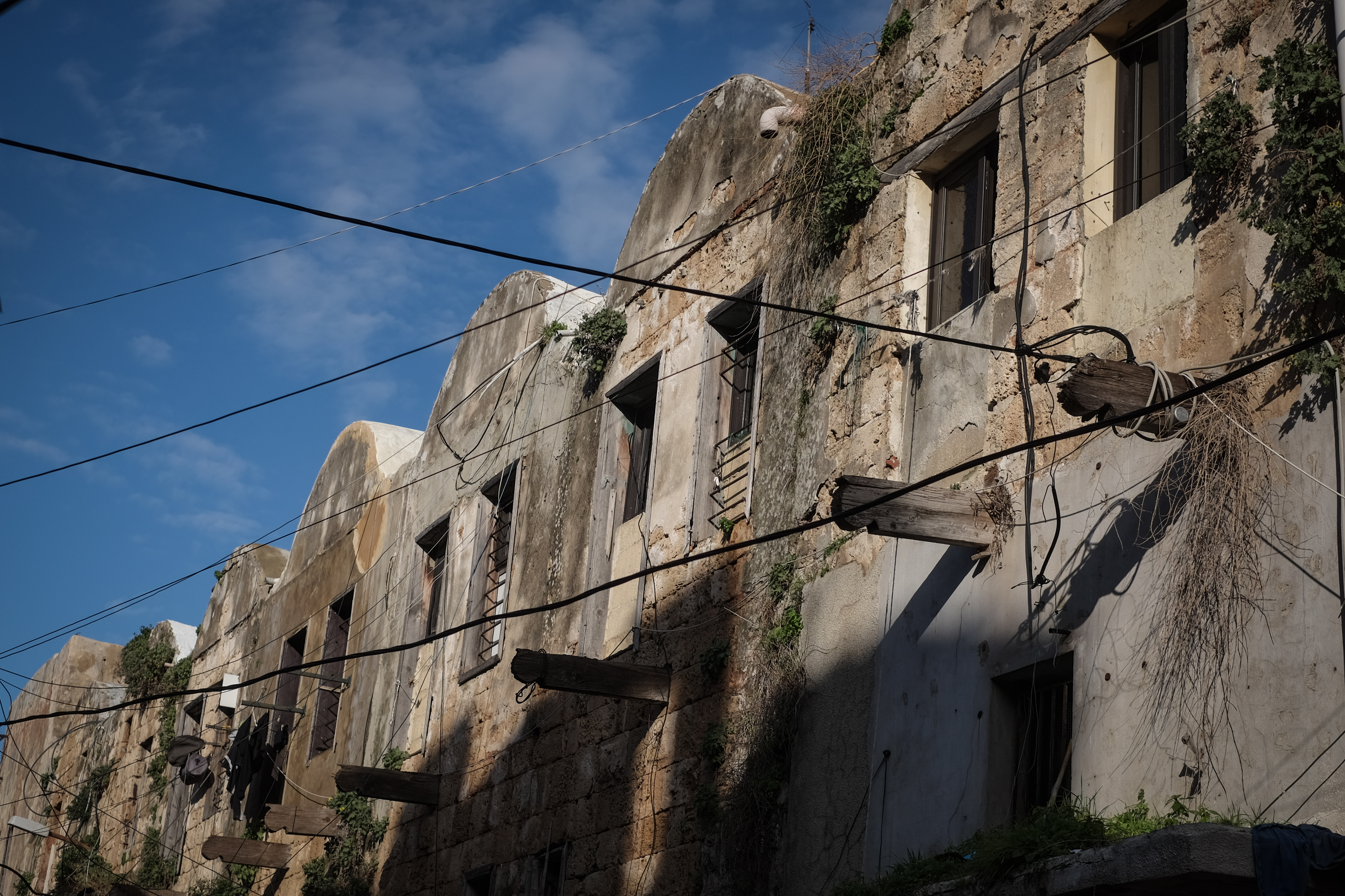 Outside the historic but now dilapidated Khan al-Tamathili building in Tripoli's Mina district, which now houses dozens of informal residents. Feb. 9, 2023. (Credit: João Sousa/L'Orient Today)
Outside the historic but now dilapidated Khan al-Tamathili building in Tripoli's Mina district, which now houses dozens of informal residents. Feb. 9, 2023. (Credit: João Sousa/L'Orient Today)
Adel, a 24-year-old fisherman, lives in the khan with his siblings.
“See this cement block up there? After the first earthquake, one of them fell,” he explains, pointing to the stone-block ceiling of the main archway leading from the street into the complex. He did not wish to provide his family name to protect his privacy.
A section of wooden beams in the ceiling of the apartment was also shaken out of place by the massive pre-dawn earthquake, his family says. A second section fell in another, smaller earthquake Wednesday night. L’Orient Today found the beams still laying where they had fallen, haphazardly strewn across a side room.
There is little the family can do to obtain help from local authorities, as it is technically illegal for them to be living in the khan.
The family slept outside on the street after both quakes, Adel says, pointing to a stretch of asphalt facing the khan’s disintegrating metal gates. “If another similar one hit, for sure the buildings are going down.”
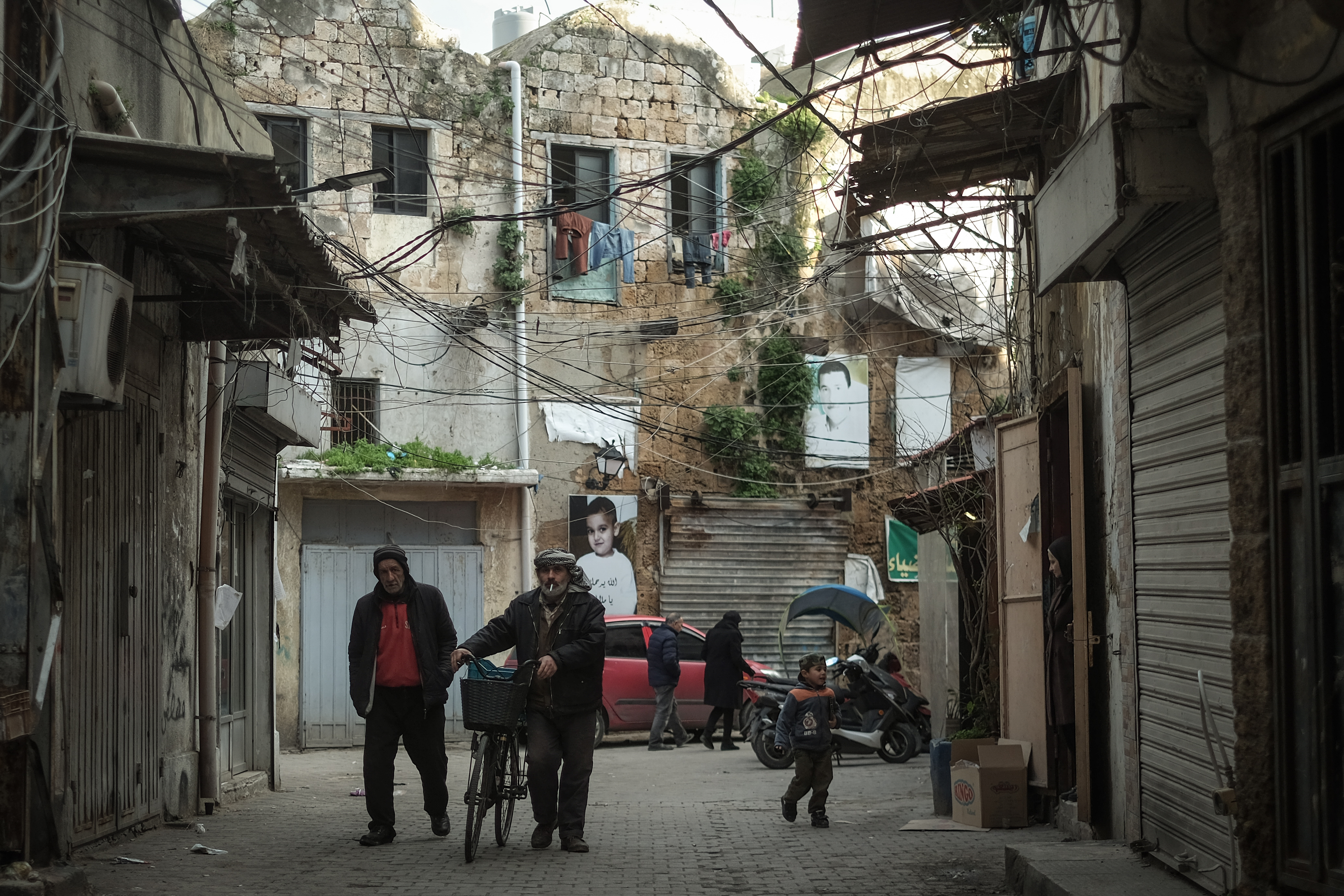 A narrow street in Tripoli's Mina district, Feb. 9, 2023. (Credit: João Sousa/L'Orient Today)
A narrow street in Tripoli's Mina district, Feb. 9, 2023. (Credit: João Sousa/L'Orient Today)
Tripoli, including the narrow old streets of the Mina district, is among the poorest areas of the country. Homes that are hundreds of years old often sit in disrepair, sagging and cracked by decades of neglect, storms and, now, earthquakes.
On Wednesday night, residents of the city fled their shaking houses following a 4.3 magnitude earthquake that hit an area near Hermel in the Bekaa Valley. Videos shared on social media showed streams of people taking to Tripoli’s streets or sitting in cars to avoid their homes.
Some sought temporary refuge on the grounds of the recently UNESCO-listed Rachid Karami expo center. Others, like Adel’s family, simply slept out in the open.
Winter storm
The panic led municipal authorities to open public parks for people to sleep in, despite the bitter winter cold in northern Lebanon.
Following Wednesday night’s quake, the director of the National Center for Geophysics, Marlene Brax, told Aljadeed TV the seismic activity recorded in Lebanon lately "is not normal."
"We have recorded nine earthquakes that were not aftershocks, four of which were felt by the population. ... It doesn’t mean that a big earthquake will definitely happen, but this activity is abnormal," she said.
Her words caused some concern among many Lebanese.
However, according to Samir Zaatiti, geologist and hydrogeologist, "the tremor felt Wednesday evening by the Lebanese is within the norms of the tremors that take place in Lebanon."
Normal or not, the recent quakes came just as a massive winter storm pummeled Lebanon with rain, snow and hail for the better part of a week.
Omar Barakat, who lives in a narrow stone alleyway in Mina, suffered a fractured wrist Wednesday while he was checking the water tank on his balcony, when part of it collapsed. He fell down into his building’s small courtyard along with the debris. Some of the stones fell on top of him, he says.
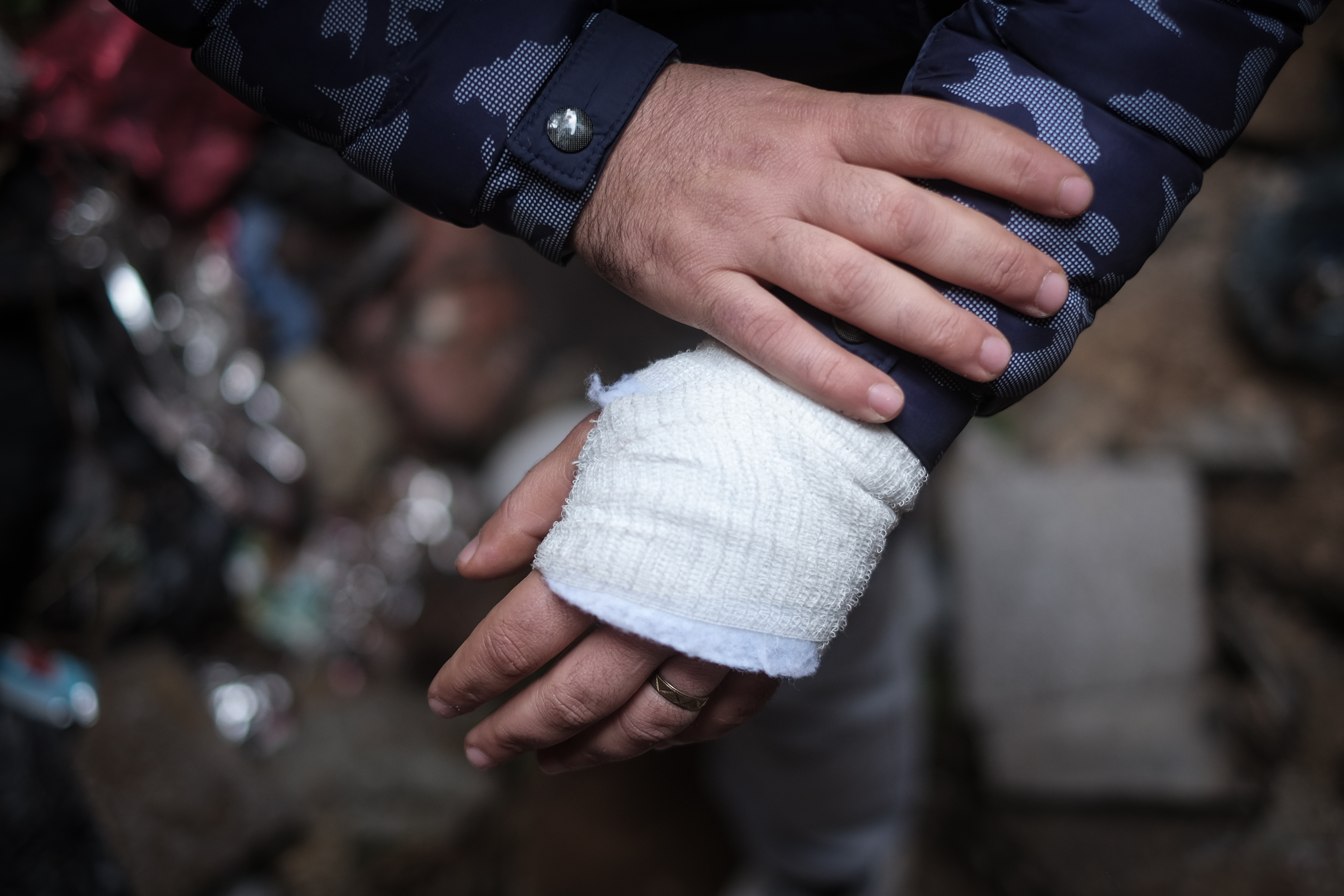 Omar Barakat, a resident of Mina, showing where his collapsing balcony injured him. Feb. 9, 2023. (Credit: João Sousa/L'Orient Today)
Omar Barakat, a resident of Mina, showing where his collapsing balcony injured him. Feb. 9, 2023. (Credit: João Sousa/L'Orient Today)
It’s not clear whether the collapse was due to the winter weather or Monday’s huge earthquake, or simply disrepair. Barakat complains of cracks in his roof that let in rainwater during the recent storm.
In any case, he says he fears his home, which he shares with his wife and young children, is not safe. Like other homes in the area, it is built with heavy sandstone, which compared to modern concrete buildings cannot bear the additional load from unpermitted additions and has much shallower foundations, meaning less stability.
Residents complained that they could not afford to hire structural engineers to inspect their homes in the aftermath of the two quakes.
The doorway from Barakat’s washroom to what was once the balcony now sits wide open, with only a cracked flowerpot blocking off a roughly 10-foot drop to the courtyard.
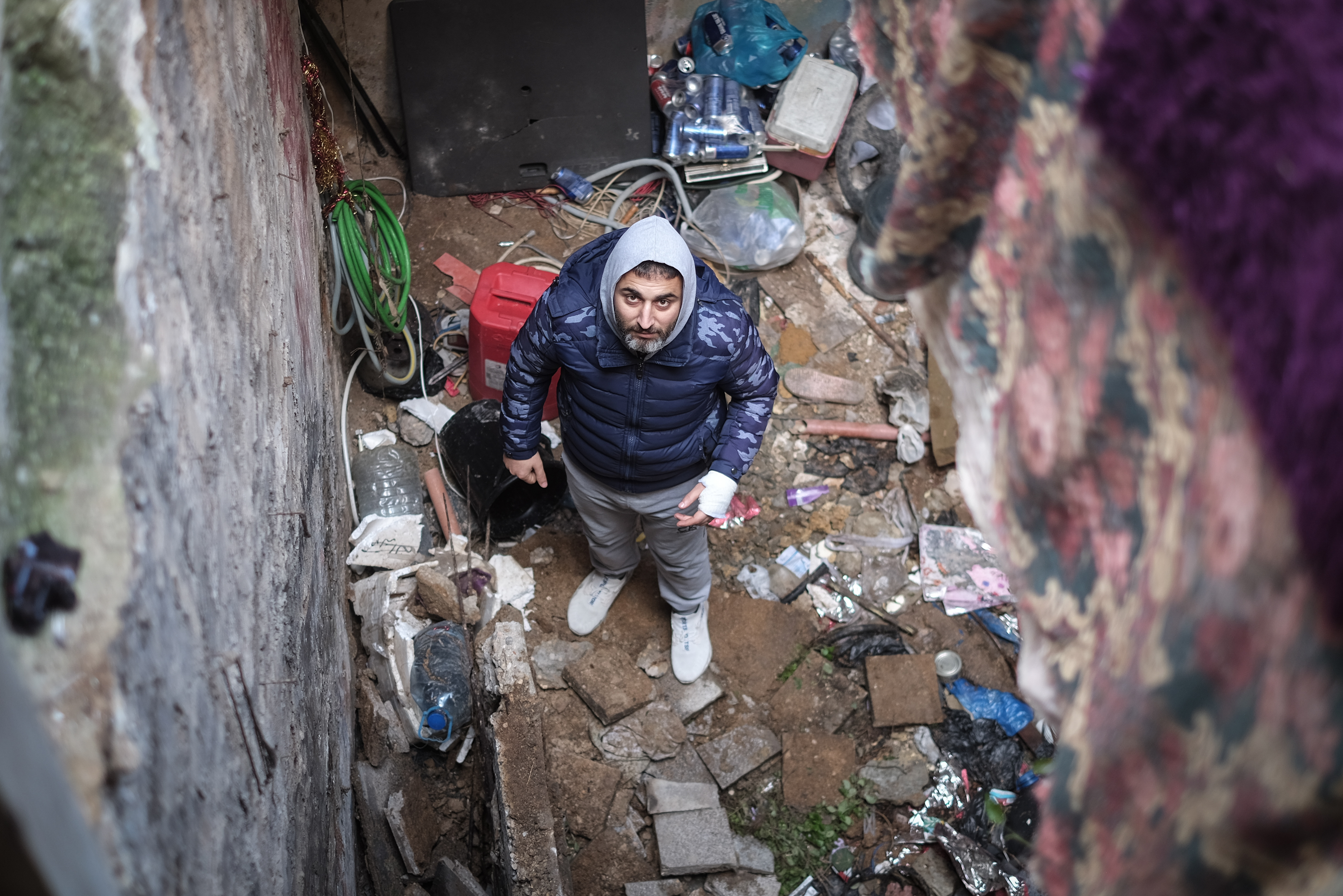 Mina resident Omar Barakat stands amid debris beneath where his balcony collapsed Wednesday, fracturing his wrist. Feb. 9, 2023. (Credit: João Sousa/L'Orient Today)
Mina resident Omar Barakat stands amid debris beneath where his balcony collapsed Wednesday, fracturing his wrist. Feb. 9, 2023. (Credit: João Sousa/L'Orient Today)
Barakat isn’t the only one in his building feeling anxious.
"When the first earthquake happened [on Monday] I felt a lot of fear and I ran outside in my pajamas with no shoes on," says Umm Hassan, 55, who co-owns the small dukkaneh shop under Barakat’s house with her husband. “It was really scary. The chandeliers [were] swaying left and right, and we were swinging like a seesaw.”
Following Monday’s earthquake, she fled to her daughter’s house in Dinnieh, in the north, where she was during the second quake.
The same experience was felt by 83-year-old barber, Esber Naseh. Speaking inside his checkered-tiled barbershop, Naseh, who has been cutting hair in Mina since 1956, tells L’Orient-Today that he wasn’t expecting a second earthquake until he “saw the chandeliers swinging” forcing him to run out of his home.
Local response
“This building is really scaring us,” says Amira al-Hilal, a woman living in another part of Mina.
Her home is in the alleyway behind an orange-stucco apartment block that residents say they’re afraid could collapse due to huge visible cracks in the outer wall.
They claim the cracks have been there since long before Monday’s quake. It’s unclear whether the cracks present deep structural issues or merely surface damage. Either way, Hilal and her neighbors say they are concerned.
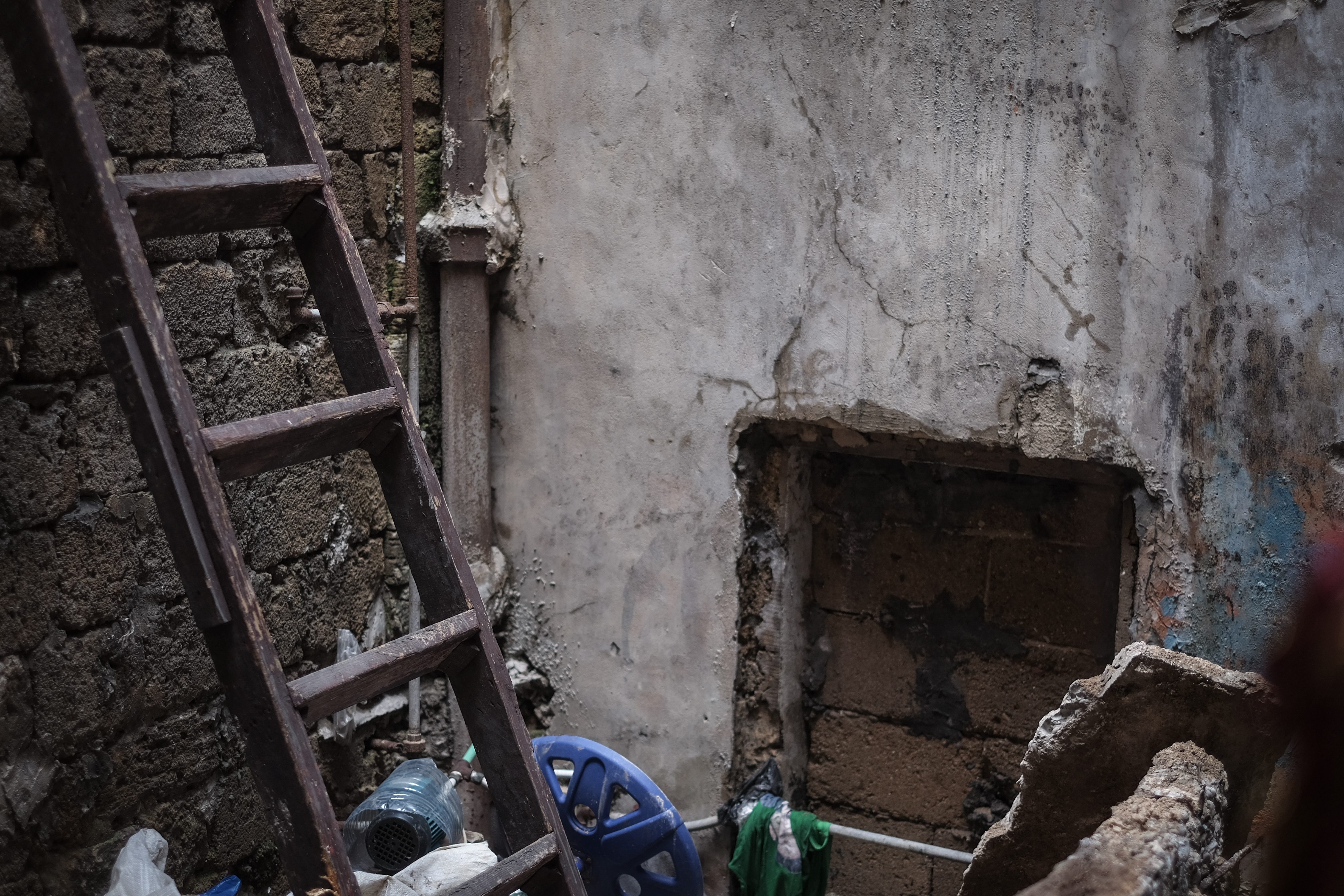 The courtyard in Mina resident Omar Barakat's building, where his balcony collapsed. Feb. 9, 2023. (Credit: João Sousa/L'Orient Today)
The courtyard in Mina resident Omar Barakat's building, where his balcony collapsed. Feb. 9, 2023. (Credit: João Sousa/L'Orient Today)
Hilal’s own house sits in disrepair, and leaks whenever it rains, she says, adding that she doesn’t trust that local authorities would help if she asked for assistance.
“There isn’t really a functional municipality here. Garbage piles up, they don’t even remove it,” Hilal claims.
In an urgent circular dispatched on Wednesday to the regional authorities, caretaker Interior Minister Bassam Mawlawi tasked municipalities to "identify leaking and substandard buildings, and landslides on public roads.”
He added that he would "resort to the Order of Engineers of Beirut and Tripoli so that the owners of damaged buildings or the municipalities concerned restore or strengthen" the roads and buildings that need it.
People in Mina who spoke with L’Orient Today say they’ve yet to receive assistance and that municipal inspectors haven’t checked on their homes.
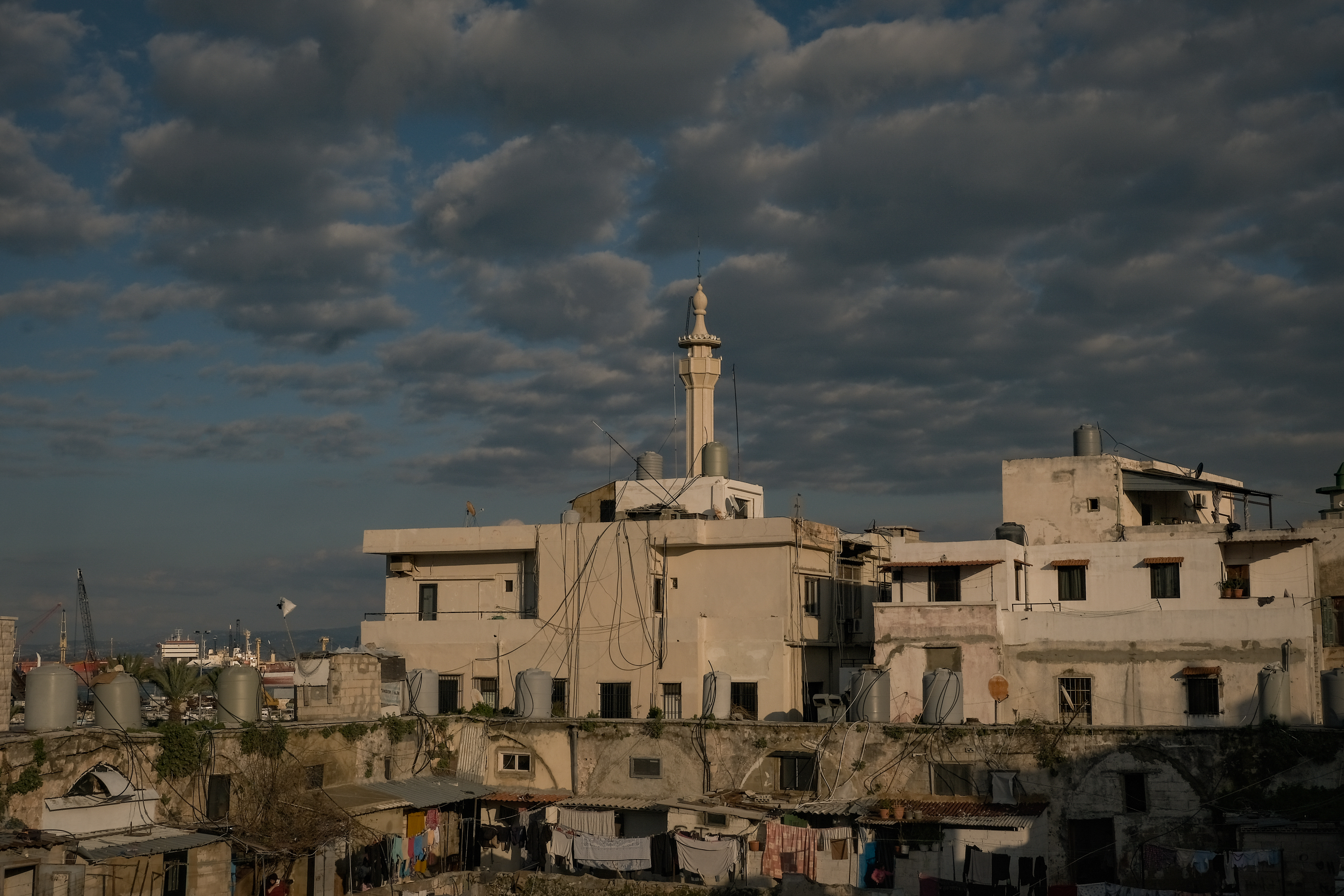 Tripoli's Mina district, Feb. 9, 2023. (Credit: João Sousa/L'Orient Today)
Tripoli's Mina district, Feb. 9, 2023. (Credit: João Sousa/L'Orient Today)
“Immediately after the earthquake, the municipality and the engineering department went out and inspected the cracked buildings,” Amer Heddad, head of the municipality engineering department tells L’Orient Today by phone.
He says they found 60 buildings in need of restoration work. Only two were ordered evacuated. The residents of those two buildings are currently staying with relatives, according to Heddad.
“But unfortunately, our funds are limited and people in need of restoration work have to do it at their own expense,” he says, pointing to the larger economic crisis that has plagued the country since 2019.
Heddad says there is an emergency team equipped for small instances, like “trees falling.” But as for a comprehensive earthquake preparedness or evacuation plan in Mina, there simply are not enough funds.
The issue of Mina’s dilapidated buildings dates back to long before the recent quakes.
“Unpermitted construction,” old buildings, earthquakes and storms “now make safety an issue,” according to a well-informed source. The source requested anonymity as they were not authorized to speak with the press.
On top of that, many residents without the money to buy new homes elsewhere often build additional stories to existing buildings “without any permission from the municipality, without any inspection, without any supervision,” according to the source.
“This can make a dangerous situation for the whole building because it's built without any inspection or permission. And this is the case of many buildings already.”
 A view of the courtyard in the historic but now dilapidated Khan al-Tamathili building in Tripoli's Mina district, which now houses dozens of informal residents. Feb. 9, 2023. (Credit: João Sousa/L'Orient Today)
A view of the courtyard in the historic but now dilapidated Khan al-Tamathili building in Tripoli's Mina district, which now houses dozens of informal residents. Feb. 9, 2023. (Credit: João Sousa/L'Orient Today)
Informal rental contracts “not listed with the municipality” also make it difficult for local authorities to enforce many necessary structural safety repairs, the source said, despite the fact that certain buildings are known to be unsafe.
“Yes, the municipality has a responsibility, but it doesn't have the tools to do anything [about home repairs] or enforce the law.”
Though most of the densely-populated district’s homes are in need of restoration, residents are left to their own devices. The recent quakes could worsen existing problems.
After Monday’s quake, cracks appeared in the walls of Umm Hassan’s house, too, she says.
Speaking to L’Orient Today from her dukkaneh beneath Barakat’s home, Umm Hassan says she hasn’t sought help from the municipality because she doesn’t trust that anyone will follow through.
She adds that she was unaware of local authorities offering any services for homes with apparent earthquake damage.
“It’s all in God’s hands,” she says.